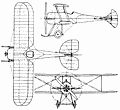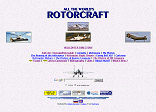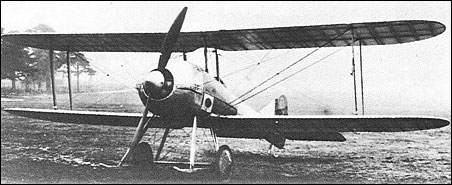|
| The S.E.2 was a rebuild of the unarmed B.S.1, which
was designed at Farnborough by Geoffrey de Havilland
assisted by H P Folland and S J Waters, and flown in early 1913. Designated as a "Bleriot Scout", the B.S.1
was an attractive single-bay equi-span biplane with a
circular-section fuselage which was of monocoque construction
aft of the single-seat cockpit. Power was provided
by a partially-cowled 100hp Gnome rotary
engine. The B.S.1 achieved 148km/h and a
climb rate of 4.6m/s in early tests, but
was badly damaged on 27 March 1913. It was then rebuilt
with a redesigned tail unit that included a semicircular
tailplane with a lifting profile, divided elevators,
a small fin and large rudder. With a fully-cowled
80hp Gnome nine-cylinder rotary engine, the aircraft
flew again in October 1913, being redesignated S.E.2 as
a Scouting Experimental (although the S.E. series had
earlier been intended for "Santos Experimental", of
canard configuration). RFC handling trials took place
(with No 5 Squadron) early in 1914, after which the S.E.2
was again rebuilt, with a more conventional rear fuselage
of wooden construction and fabric covering, larger
fin and rudder, constant-chord tailplane and other
smaller changes. Taken to France (by No 3 Squadron)
later in 1914, the S.E.2 was fitted with two Army rifles
firing at outward angles to clear the propeller, and
other (revolver) armament was also tried during the
several months it remained with the squadron.
 | A three-view drawing (800 x 731) |
| WEIGHTS |
| Take-off weight | 513 kg | 1131 lb |
| Empty weight | 327 kg | 721 lb |
| DIMENSIONS |
| Wingspan | 8.38 m | 28 ft 6 in |
| Length | 6.22 m | 20 ft 5 in |
| Height | 2.83 m | 9 ft 3 in |
| Wing area | 17.47 m2 | 188.05 sq ft |
| PERFORMANCE |
| Max. speed | 137 km/h | 85 mph |
| DICK GREENWOOD, e-mail, 17.01.2010 18:37 FORGOT TO MENTION THE 'SKEWED' ARMY RIFLES. THE PERFECT TOUCH IN 1913. reply | | DICK GREENWOOD, e-mail, 17.01.2010 18:33 THIS IS ANOTHER AMAZINGLY ADVANCED AIRPLANE FOR 1913. I HAD BEEN ADMIRING THE 1916 'SUPERMARINE'. THIS IS THE FIRST I'VE SEEN IN A 'MONOCOQUE'STRUCTURE. AMAZING. FOREVER IN AWE OF ENGLISH ENGINEERING . reply |
|
Do you have any comments?
|
| 
COMPANY
PROFILE
All the World's Rotorcraft
|







